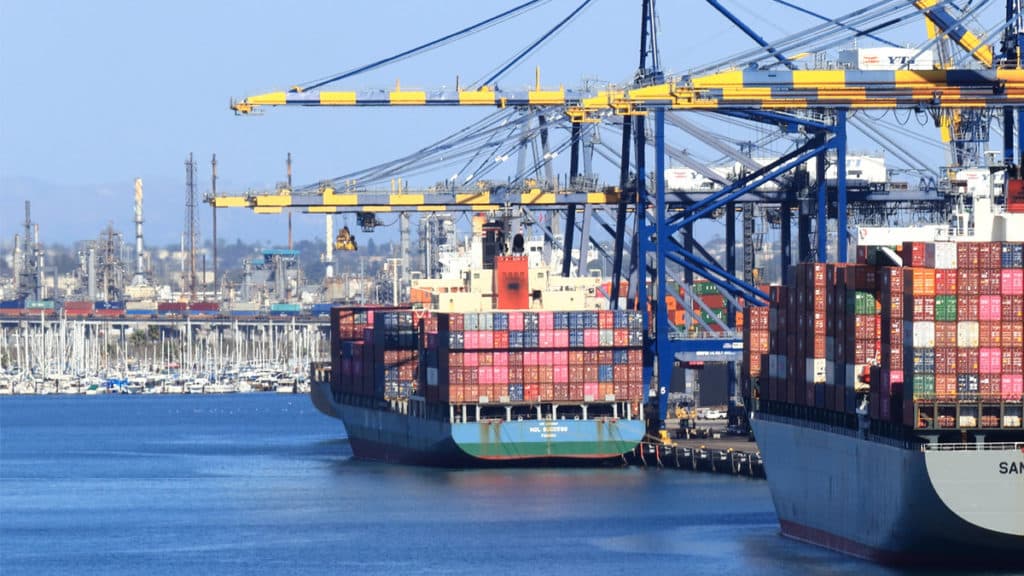
Imports and exports are being disrupted by turbulence in the supply chain. What are the causes, impacts, and how can shippers successfully navigate this environment?

Imports and exports are being disrupted by turbulence in the supply chain. What are the causes, impacts, and how can shippers successfully navigate this environment?
Turbulence in every aspect of the supply chain, including imports and exports, continues. Knowledge is power–understanding what’s causing the situation can help reduce stress and enable you to select the best course of action to best move forward. What is the current state of imports and exports, what’s causing issues and how, and what you can do to successfully navigate this environment?
The rollercoaster that the United States has experienced since Jan 2020, in terms of supply and demand, was nothing short of turbulent. Shelves ran bare of common products like toilet paper that we use in our everyday lives. Large consumer packaged goods (CPG) companies were struggling to keep warehouses stocked with domestic inventory and were scrambling to import more from overseas. Planners increased order sizes and volumes to account for decreased supply and elongated transit times. This magnified the bullwhip effect which made it even more challenging for manufacturers to plan production runs while dealing with labor and material shortages. Congested ports, lack of steamship space (due to competition and COVID lockdowns), and labor shortages all contributed to supply chain delays.
Fast forward to 2022–much of that ordering has come through, warehouses are now stocked to the brim, and domestic inventories are at record levels. Some large CPGs are turning to discount outlets to move the excess product while others are choosing order cancellations as companies swing the pendulum in the other direction to counter too much inventory. Order volumes will pick back up once companies work through existing inventories and as prices for transportation and fuel continue to decline.
This is most known as the supply chain bullwhip, a distribution channel phenomenon in which demand forecasts yield supply chain inefficiencies. It refers to the increasing swings in inventory in response to shifts in consumer demand as you move further up the supply chain.
Import levels are still well above pre-COVID highs. However, importers are moving volumes to East Coast US ports to avoid congestion and disruptions due to the AB5 at West Coast ports. There are still dozens of ships loitering off both US coastlines waiting for berths to unload containers, keeping demand for drayage and port services high. The difference today is that it’s spread out throughout the country instead of clustered at LA/Long Beach. Imports are expected to decline through Q4 but 2022 will still end the year with higher import volumes than 2021 according to the National Retail Federation.
The biggest challenge in exports is getting empty equipment.
The biggest challenge in exports is getting empty equipment. Steamship lines are racing empty containers back to Asia to pick up high-paying freight. The US Government has gotten involved to protect US exporters. But the biggest win for exporters is the decline in container rates from Asia to the US. That makes rushing empties back to Asia less attractive and steamship lines more likely to pick up export freight.
Expect a massive wave of nearshoring to continue as US manufacturers bring production back to North America. This is in line with a report in 2021 revealing that 83% of manufacturers are likely to reshore jobs, up from only 54% in March 2020, before the pandemic was a factor. This trend started as low-cost labor in Asia was not the savings it used to be. Combined with the fact that long transit times and costs for producing in Asia exceed that of production domestically or in Mexico has helped it create more momentum. Nearshoring also shortens supply lines which improves visibility and control. In fact, companies such as Intel have already broken ground on new manufacturing in the US.
Shippers can successfully navigate this turbulent import/export environment by creating a strong partnership with their capacity providers and supply chain partners. Remember that there is a relationship between cost, transit time, and service levels. The value of a good transportation partner is the ability to balance those variables against the needs of the shipper/importer. Having an expert to help delegate and assist between steamship lines, carriers, and warehousing adds an extra level of service and expectation to any large producer or consumer.
Aligning your supply chain with service providers that understand your key objectives and effectively looks for ways to increase efficiency and decrease your unplanned costs
A partner that advocates for your freight helps ensure that your supply chain strategies are adaptable as the market changes and sustainable as your business evolves. Aligning your supply chain with service providers that understand your key objectives and effectively looks for ways to increase efficiency and decrease your unplanned costs is extremely useful.
Get expert logistics insights delivered straight to your inbox
"*" indicates required fields